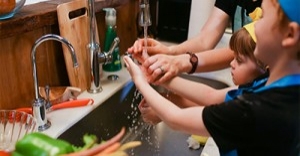

A Curiosity Approach environment fosters exploration, creativity, and sensory-rich experiences, making learning feel natural and engaging. Here are some additional ideas to enhance your nursery room setup.
Loose parts are open-ended materials that children can move, manipulate, stack, and combine in countless ways during play. They can be natural, recycled, or everyday items and encourage children to develop fine motor skills, critical thinking, and social interaction. The following article provides a list of Loose Parts Materials for Babies, Toddlers, and Preschoolers, Loose Parts Materials Based On Themes, How To Set Up Loose Parts Materials and more.
Supporting schemas through meaningful and engaging experiences helps nurture children’s natural learning processes. The following article provides activity ideas for incorporating schema-focused activities into the learning environment.
Setting up room displays can be quite exciting. The following article provides information on Non Negotiable Displays, Highly Recommended Displays, Optional Displays, Displays To Meets NQS In Australia, Displays To Meet National Regulations, Quality Ratings Display, Ideas For Creating A Children's Art Display, Examples Of Cultural Displays, Examples Of Aboriginal and Torres Strait Islander Displays, Themed Displays, Creating A Parent Displays and more.
Working barefoot is beneficial for educators in early childhood settings. It is comfortable and relaxing, which can contribute to a positive and calm atmosphere. The following article provides information on Benefits for Educators, Strategies For Educators, Implementing Barefoot Policies, Tips for Implementing Barefoot Practices for Educators, and more.
Inquiry-based learning in early childhood is a powerful approach that nurtures children's natural curiosity and encourages them to explore, ask questions, and discover answers through hands-on experiences. The following article provides information on the Benefits Of Implementing Inquiry Based Learning, Steps to Implement Inquiry-Based Learning, Guide Children In Inquiry Based Learning and more.
Lighting plays a crucial role in early childhood environments, impacting everything from mood and behavior to learning and development. The following article provides information on Effect Of Lighting, Effects Of Poor Lighting, The Effects Of Poor Lighting On Children, Dim Lighting In Early Childhood and more.
Meditation can be a wonderful tool for preschoolers to help them relax, focus, and manage their emotions. The following article provides simple and engaging meditation activities for young children.
Kinaesthetic learners, also known as tactile learners, thrive on physical movement and hands-on experiences. They learn best through activities that involve touch, movement, and manipulation of objects. The following information provides information on How To Identify Kinaesthetic Learners, Characteristics of Kinaesthetic Learners, Strategies to Support Kinaesthetic Learners and more.
Involving children in documentation in early childhood education can be a powerful way to engage them in their own learning process. The following article provides information on Strategies Involving Children In Documentation and Multimodal Representations.
 As of 2024–2025, new national regulations across Australia have significantly tightened restrictions on smoking and vaping in and around early childhood education and care (ECEC)… Read More
As of 2024–2025, new national regulations across Australia have significantly tightened restrictions on smoking and vaping in and around early childhood education and care (ECEC)… Read More
 The Australian Government Department of Education has engaged ORIMA Research to conduct an online ECEC Staff Survey. By collecting this data over time, the Department… Read More
The Australian Government Department of Education has engaged ORIMA Research to conduct an online ECEC Staff Survey. By collecting this data over time, the Department… Read More
 Australian Food Safety Week offers a vital opportunity to embed safe food practices into early learning environments. This year’s theme invites educators and children to… Read More
Australian Food Safety Week offers a vital opportunity to embed safe food practices into early learning environments. This year’s theme invites educators and children to… Read More
© 2009-2025 Aussie Childcare Network Pty Ltd. All Rights Reserved.
